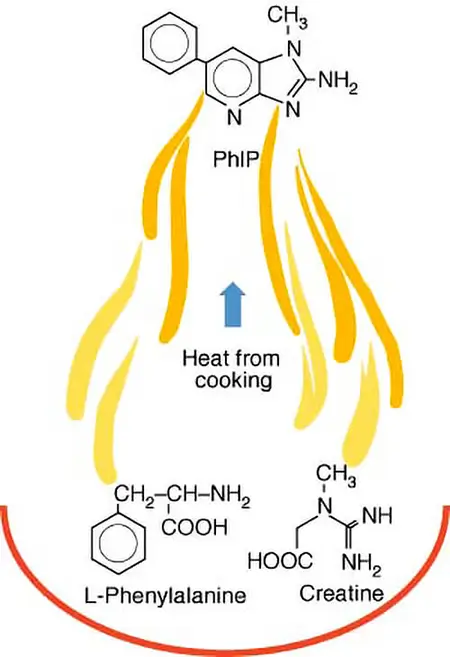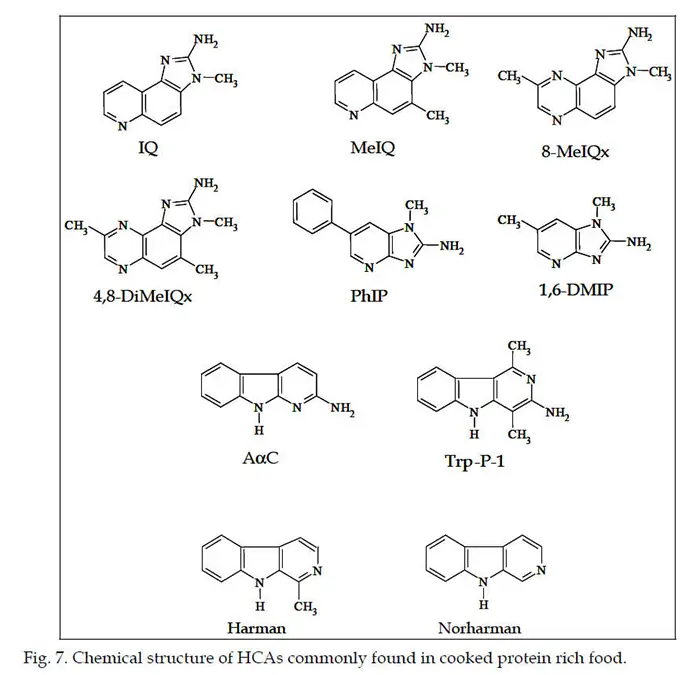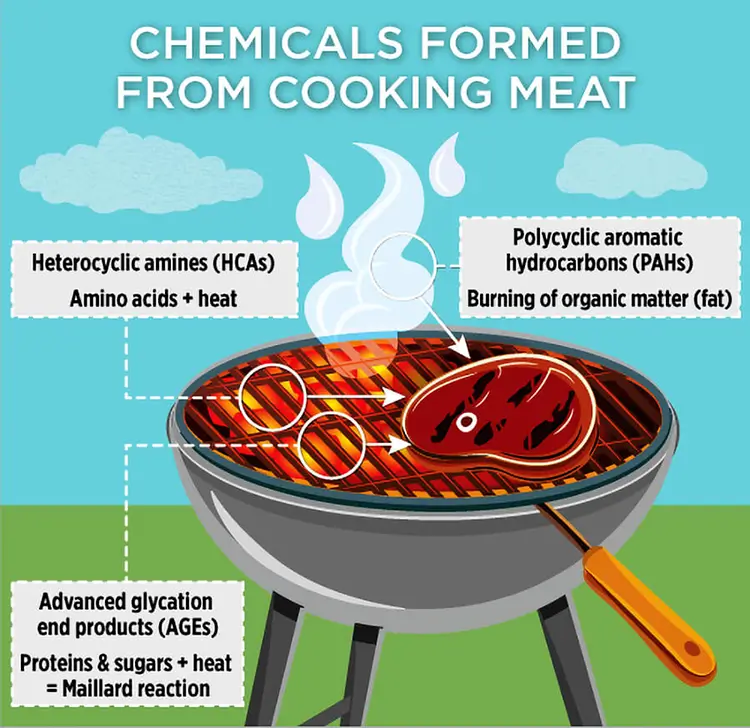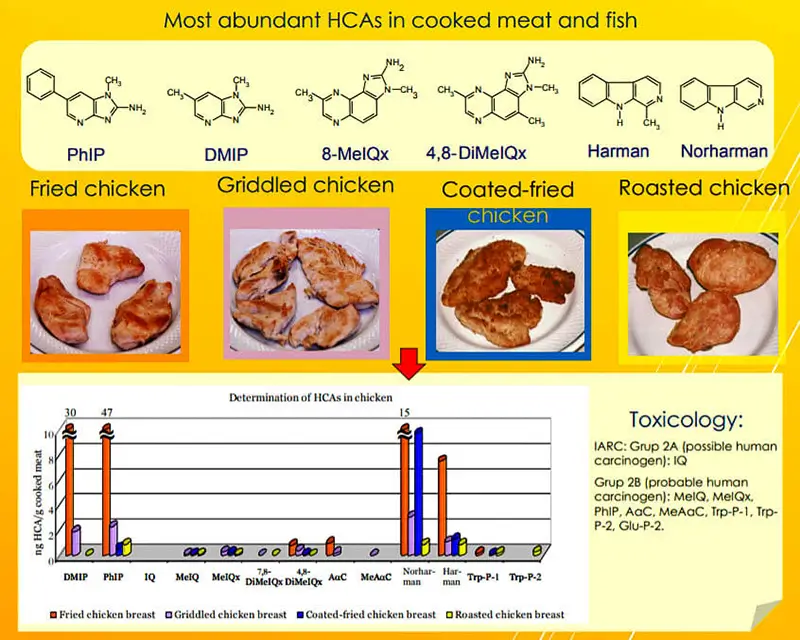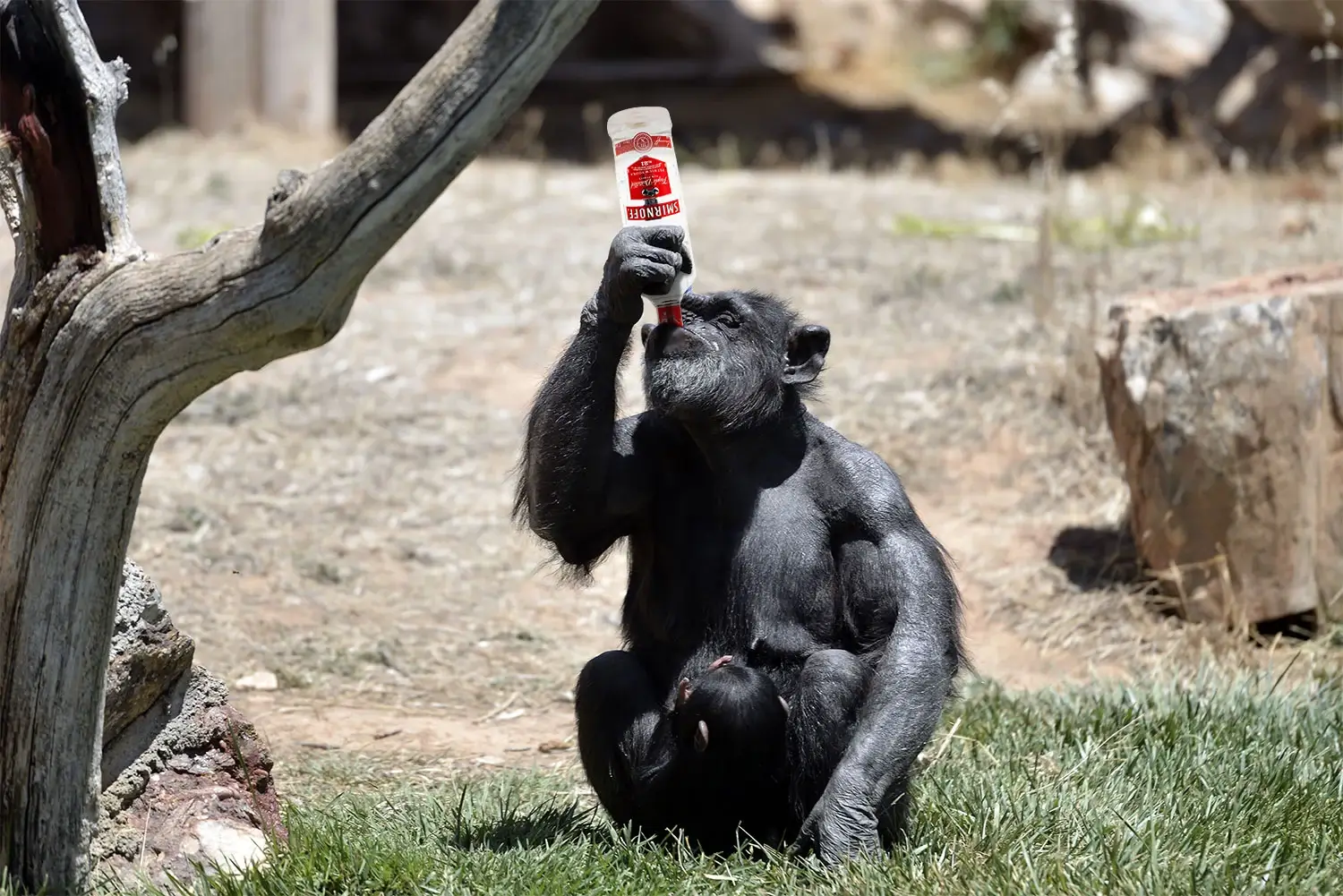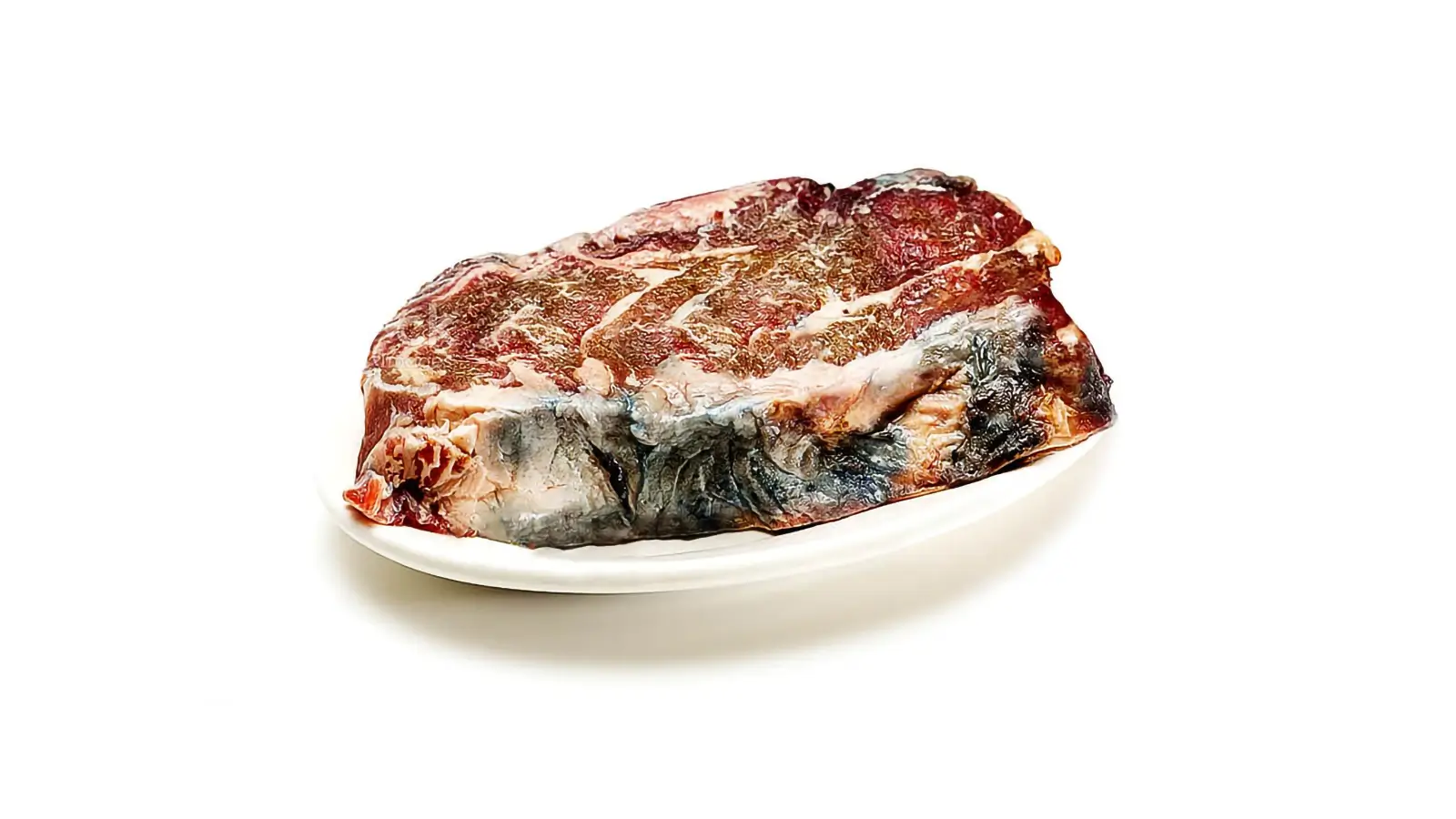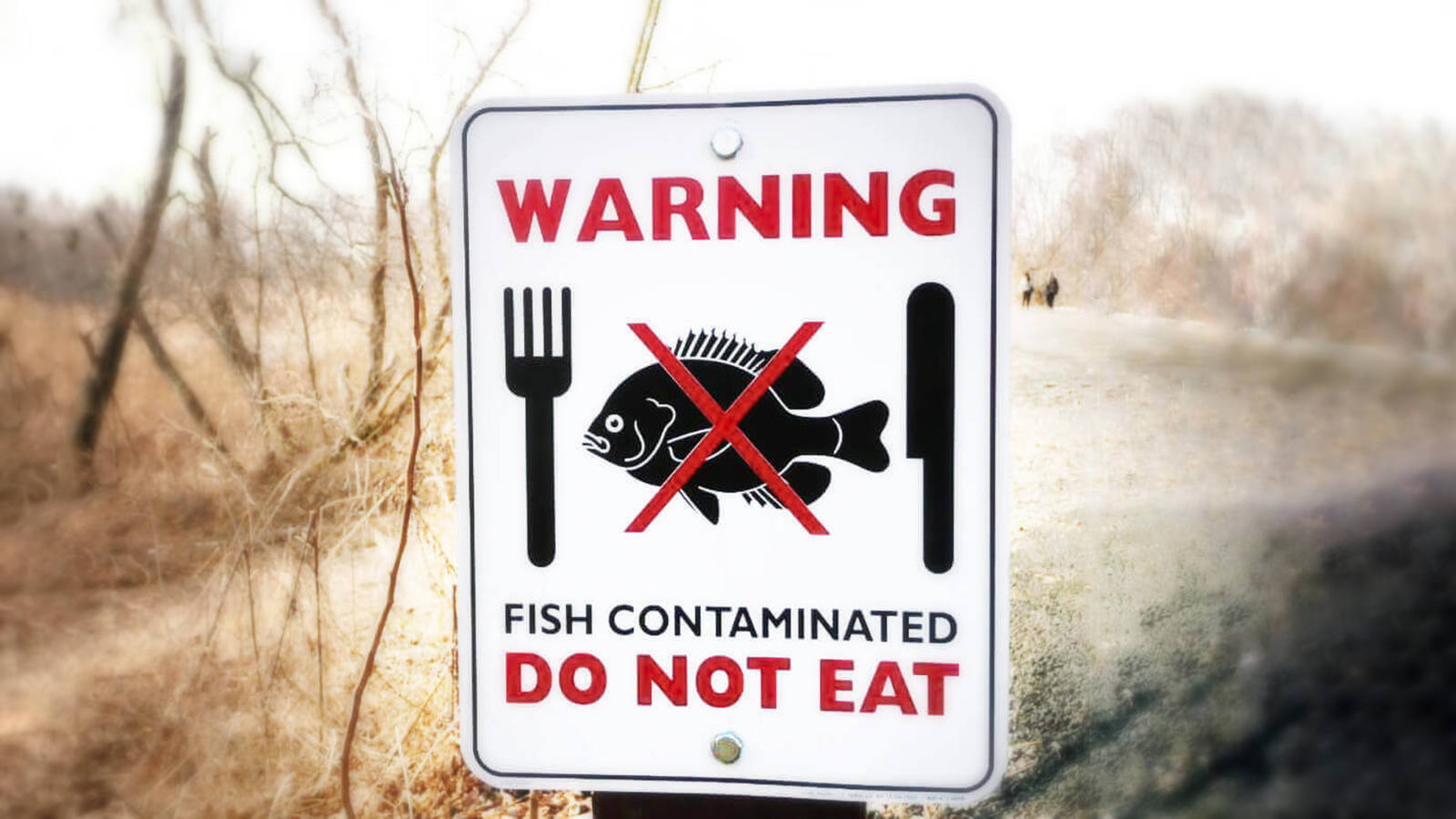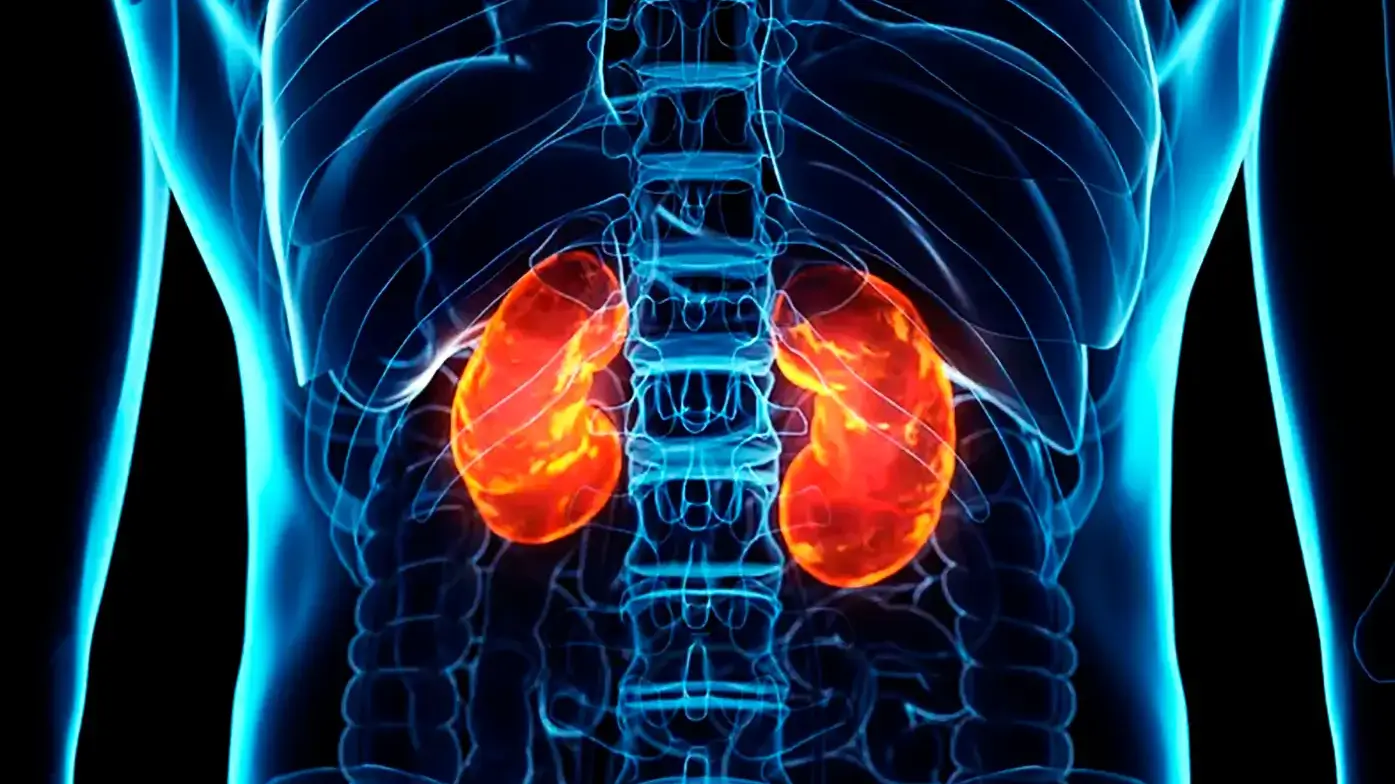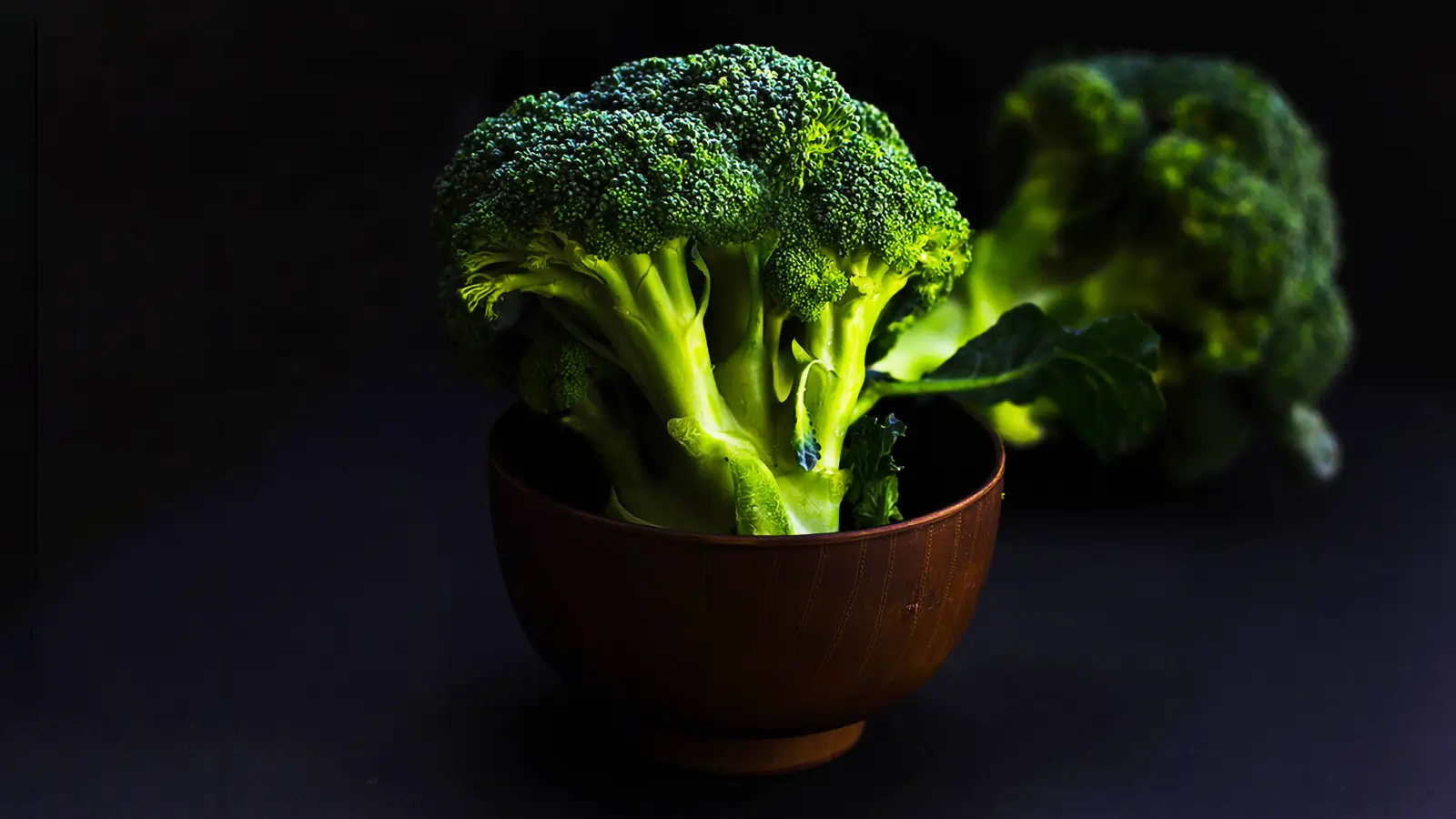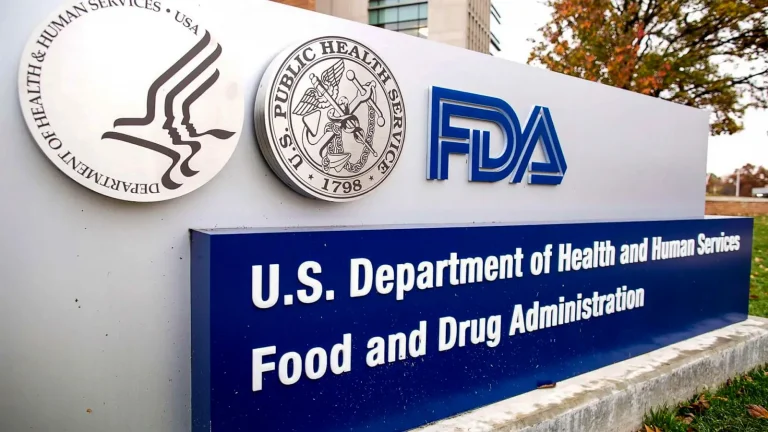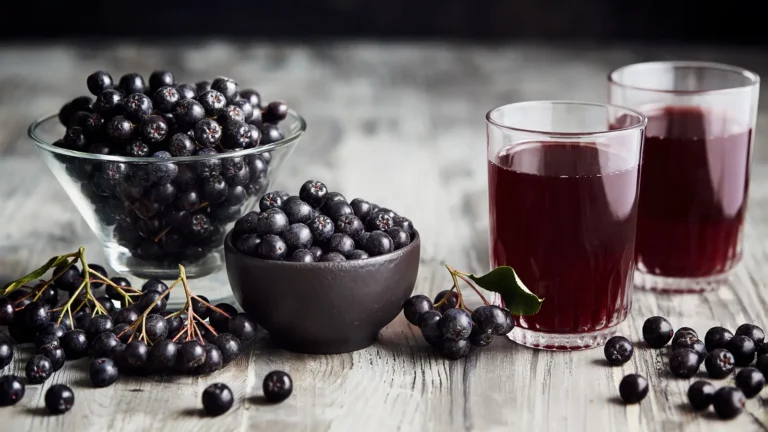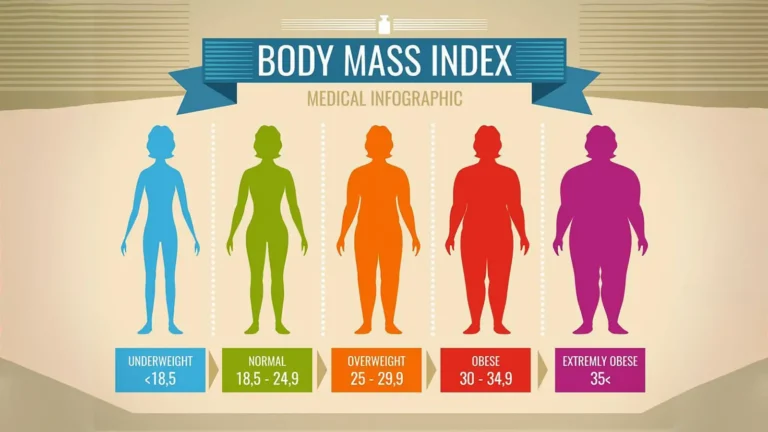Cooked Meat- The Mutagen in a Bite, Heterocyclic Amine Exposure
Heating of amino acids in the presence of creatine (cooked meat) creates mutagens known as Heterocyclic Amines (HCA).
Milos Pokimica
Written By: Milos Pokimica
Medically Reviewed by: Dr. Xiùying Wáng, M.D.
Updated June 9, 2023There is no known animal in nature except modern humans that grills meat. This is not an evolutionary congruent process that is causing serious maladaptation.
Heating of amino acids in the presence of creatine and monosaccharide sugars creates mutagens known as Heterocyclic Amines (HCA). Our body does not recognize them as different and integrates them into the cells. These amino acids have been damaged due to heating and their molecular form is changed. This integration into healthy cells causes mutations in DNA. Cancer is one of many correlated diseases.

Paleo people who like lean meat somehow forget that in the Paleo period most prehistoric people did not live long enough to die from cardiovascular disease or cancer or suffer from chronic diseases. In extremely harsh conditions where the average life expectancy is 32 years of age, the genes that get passed along to younger generations are the ones that are just old enough to go to reproductive age by any means necessary. That means not dying of starvation or disease or in an attack. The more calories we consume, the better no matter what they are. The meat cancer link is not really of any concern.
Eating raw meat from decaying carcasses is not our food. It would take just a couple of hours after death in climate conditions in Africa for meat to spoil.
Carnivorous species deal with bad microorganisms with strong stomach acid. The capacity of the carnivore stomach to emit hydrochloric acid is outstanding. Carnivores can hold their gastric pH all way down to around 1 or 2, even with food present. Strong gastric pH facilitates protein breakdown and is necessary to kill the abundant amount of dangerous microorganisms frequently found in rotting flesh. Their digestive tract is sterile and there is no large colon for fermenting fiber or other foods. Meat is digested in a couple of hours and excreted out. In carnivore animals, transit time is very short. Types of bacteria in the intestine are different also. When we eat a rotten apple, we might get drunk, but if we eat raw decaying flesh, there is an excellent possibility of severe consequences and death.
In certain conditions when there is an absolute need, the herbivorous animals will eat available meat only to survive. And the meat has to be cooked.
Let me give one example of how chronic diseases occur and progress so that we can start to understand this. The most common nervous system disorder of all neurological disorders is something called essential tremor (ET). It usually involves an involuntary shaking of the arms, hands, or fingers but sometimes it can also affect the head, vocal cords, or other body parts. It is a different condition than Parkinson’s disease but is often misdiagnosed as such. In most severe cases, ET interferes with a person’s activities of daily living, like dressing, taking care of personal hygiene, feeding, and is generally progressive in most cases. Some people have it in families so genetics plays a role and will develop symptoms at an early age but it is not bad genetics that is the real problem, and I will explain.
What happens is that when we heat amino acids (building blocks of protein) in the presence of creatine and monosaccharide sugars, they have a reaction and amino acids lose their molecular form.
What that means is that they are different but not that much, and that is the problem because our body does not recognize them as different. It thinks that they are just regular aminos. Meat cancer is a correlation caused by this mutagenicity of Heterocyclic Amines (HCA) but so are many other different conditions.
We are still not fully adapted to our new lifestyle and as a consequence what happens is that they start to be incorporated into our cells. Because their molecular structure is different, it causes problems in the form of mutations. Having mutations maybe sound like a good idea for an SF movie, but in real life it kills.
It causes changes to DNA. Meat heated at high temperatures, especially above 300 °F (as in grilling or pan-frying), or that is cooked for a long time, tends to form more of these mutated heterocyclic amines (HCAs).
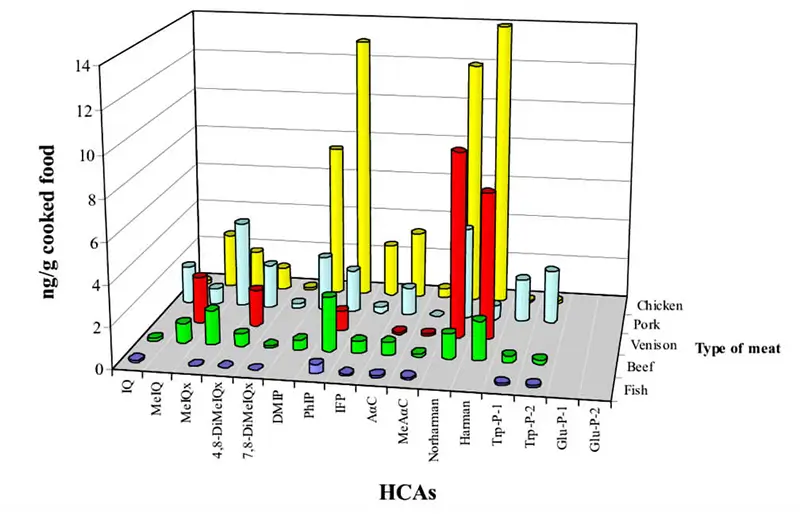
For example, well done, grilled, or barbecued chicken and steak all have extreme concentrations of Heterocyclic Amines (HCAs). Chicken is the worst of them all actually, with around two times more of this carcinogen than beef or pork. Marinating meat before cooking in some form of antioxidant-rich marinades like garlic or rosemary seems to help. Garlic at 20 gm/100 gm marinade reduced carcinogen production by about 70%. In contrast, regular barbecue sauce that contains much sugar caused a significant increase in chemical formation, tripling the levels after 15 minutes of cooking.
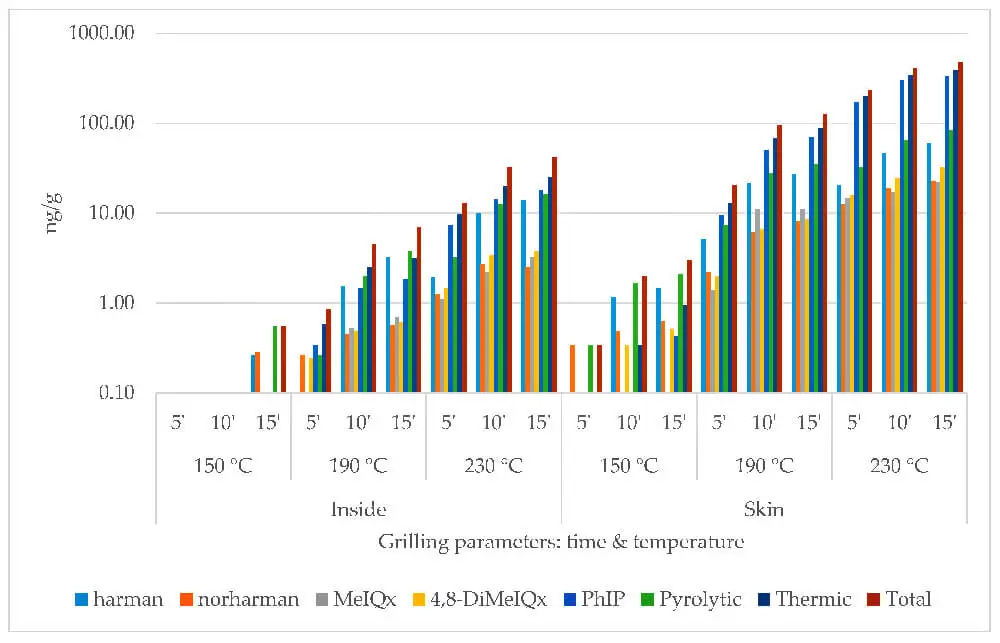
There is a list of different types of these messed-up heterocyclic Amines in cooked meat that are created. PhIP (2-Amino-1-methyl-6-phenylimidazopyridine) is the most abundant one. Long-term rodent studies confirmed that PhIP causes mammary gland and colon cancer. The most toxic and mutagenic of all is MeIQ. MeIQ is precisely 24 times more carcinogenic than aflatoxin, and aflatoxin is one of the most toxic substances ever created by mold. All of the other ones, and there are more than 20 HCAs, are more toxic than benzopyrene. Benzopyrene is a primary carcinogen that does the most damage in smokers and is found in cigarette smoke and coal tar.
Smoke actually at the same time during cooking creates a list of other different mutagens named polycyclic aromatic hydrocarbons (PAHs). Cooking techniques that expose meat to smoke or charring contribute to PAH formation. PAHs are created with the high-temperature cooking of meat. For example, when fat and juices from grilled meat drip and cause flames, the fumes will be filled with PAHs that will then adhere to the surface of the meat. Any form of burning can create them, for example, coal, oil, gas, wood, garbage, and tobacco have them too. They are also formed where smoke is used such as smoking of meats.
These unnatural mutagens (HCAs and PAHs) that are formed with unnatural activities such as grilling are capable of damaging DNA because of our lack of adaptation to them. The body has a line of specific enzymes to neutralize these mutagens.
Researchers have discovered that the action of those enzymes differs significantly among people. And that is a problem. In individuals who have lower levels of these enzymes, exposure to these compounds may be associated with an increase in cancer risks. Some of us can cope better with detoxifying these mutagens and some can’t and will have a higher risk of cancer. And that is what is called a genetic factor in medicine. It is not that we are born with bad genes, and that is it, you will get cancer or you will not. The situation is more complicated than that.
Of course, some level of cancer happens in animals too, but 23.4% of all deaths are not from genetics. It is an epidemic of biblical proportions because it is, in essence, a form of maladaptation to our environment.
One of the HCAs that is formed is Harmane. Harmane is a neurotoxin that is strongly associated with essential tremors. If exposed by injection mouse will develop an extreme tremor in just 3.1 minutes after the exposure and the tremor would last for hours. Because it is fat-soluble, it will accumulate over time in all fat tissues including the brain. It is found in elevated levels not just in the brains of ET patients but also in Parkinson’s disease. When compared to the control group Harmane concentration is precisely 50 percent higher in the brains of essential tremor patients. It is also elevated in blood samples too. If there is a patient that has a family history of essential tremor blood work results show the highest concentrations of all people.
Essential tremor is liver enzyme detoxification disease, a form of maladaptation. People with ET but without a family history will have little lower levels than people with a family history but still well above normal levels. Elevated Harmane in ET is due to an inherited reduction in the capacity to metabolize it out of the system. Same with any other disease, some people are more prone to it some less, but none of us are immune completely. That is why we see that with time the percentage of people with the disease goes up. From 4% in the 40s to 20% in the 90s. If we managed to live long enough most of us will eventually get it, except for the people who do not consume it. For each additional 10 grams/day of meat consumed, the odds of ET are increased by 6%.
Now you might not get ET, all of this is a just small example for logical understanding. You might just get cancer. The real difficulty is that there is a long list of different chronic diseases to make a pick from depending on individual genetics.
References:
Passages selected from a book: Pokimica, Milos. Go Vegan? Review of Science Part 1. Kindle ed., Amazon, 2018.
- Hopfner, Franziska, and Rick C. Helmich. “The Etiology of Essential Tremor: Genes Versus Environment.” Parkinsonism & Related Disorders, vol. 46, Elsevier BV, Jan. 2018, pp. S92–96. https://doi.org/10.1016/j.parkreldis.2017.07.014.
- Louis, Elan D et al. “Dietary epidemiology of essential tremor: meat consumption and meat cooking practices.” Neuroepidemiology vol. 30,3 (2008): 161-6. doi:10.1159/000122333
- Barzegar, Fatemeh et al. “Heterocyclic aromatic amines in cooked food: A review on formation, health risk-toxicology and their analytical techniques.” Food chemistry vol. 280 (2019): 240-254. doi:10.1016/j.foodchem.2018.12.058
- Sanz-Serrano, J et al. “Genotoxicity evaluation of fried meat: A comprehensive review.” Food and chemical toxicology : an international journal published for the British Industrial Biological Research Association vol. 136 (2020): 110943. doi:10.1016/j.fct.2019.110943
- Felton, J S et al. “Identification of the mutagens in cooked beef.” Environmental health perspectives vol. 67 (1986): 17-24. doi:10.1289/ehp.866717
- Heddle, J A et al. “A test of the mutagenicity of cooked meats in vivo.” Mutagenesis vol. 16,2 (2001): 103-7. doi:10.1093/mutage/16.2.103
- Shin, Aesun et al. “Meat and meat-mutagen intake, doneness preference and the risk of colorectal polyps: the Tennessee Colorectal Polyp Study.” International journal of cancer vol. 121,1 (2007): 136-42. doi:10.1002/ijc.22664
- Shabbir, Muhammad Asim et al. “Effect of thermal treatment on meat proteins with special reference to heterocyclic aromatic amines (HAAs).” Critical reviews in food science and nutrition vol. 55,1 (2015): 82-93. doi:10.1080/10408398.2011.647122
- Alaejos, M S et al. “Exposure to heterocyclic aromatic amines from the consumption of cooked red meat and its effect on human cancer risk: a review.” Food additives & contaminants. Part A, Chemistry, analysis, control, exposure & risk assessment vol. 25,1 (2008): 2-24. doi:10.1080/02652030701474235
- Pleva, Dániel et al. “Predictive Correlation between Apparent Sensory Properties and the Formation of Heterocyclic Amines in Chicken Breast as a Function of Grilling Temperature and Time.” Foods (Basel, Switzerland) vol. 9,4 412. 2 Apr. 2020, doi:10.3390/foods9040412
- Zheng, Wei, and Sang-Ah Lee. “Well-done meat intake, heterocyclic amine exposure, and cancer risk.” Nutrition and cancer vol. 61,4 (2009): 437-46. doi:10.1080/01635580802710741
Related Posts
Do you have any questions about nutrition and health?
I would love to hear from you and answer them in my next post. I appreciate your input and opinion and I look forward to hearing from you soon. I also invite you to follow us on Facebook, Instagram, and Pinterest for more diet, nutrition, and health content. You can leave a comment there and connect with other health enthusiasts, share your tips and experiences, and get support and encouragement from our team and community.
I hope that this post was informative and enjoyable for you and that you are prepared to apply the insights you learned. If you found this post helpful, please share it with your friends and family who might also benefit from it. You never know who might need some guidance and support on their health journey.
– You Might Also Like –

Learn About Nutrition
Milos Pokimica is a doctor of natural medicine, clinical nutritionist, medical health and nutrition writer, and nutritional science advisor. Author of the book series Go Vegan? Review of Science, he also operates the natural health website GoVeganWay.com
Medical Disclaimer
GoVeganWay.com brings you reviews of the latest nutrition and health-related research. The information provided represents the personal opinion of the author and is not intended nor implied to be a substitute for professional medical advice, diagnosis, or treatment. The information provided is for informational purposes only and is not intended to serve as a substitute for the consultation, diagnosis, and/or medical treatment of a qualified physician or healthcare provider.NEVER DISREGARD PROFESSIONAL MEDICAL ADVICE OR DELAY SEEKING MEDICAL TREATMENT BECAUSE OF SOMETHING YOU HAVE READ ON OR ACCESSED THROUGH GoVeganWay.com
NEVER APPLY ANY LIFESTYLE CHANGES OR ANY CHANGES AT ALL AS A CONSEQUENCE OF SOMETHING YOU HAVE READ IN GoVeganWay.com BEFORE CONSULTING LICENCED MEDICAL PRACTITIONER.
In the event of a medical emergency, call a doctor or 911 immediately. GoVeganWay.com does not recommend or endorse any specific groups, organizations, tests, physicians, products, procedures, opinions, or other information that may be mentioned inside.
Editor Picks –
Milos Pokimica is a doctor of natural medicine, clinical nutritionist, medical health and nutrition writer, and nutritional science advisor. Author of the book series Go Vegan? Review of Science, he also operates the natural health website GoVeganWay.com
Latest Articles –
Plant Based News
-
Sticky Marmalade Tofu
on June 20, 2025
-
Violife Launches ‘Market-First’ High-Protein Cheddar Alternative
on June 20, 2025
-
How to Make Homemade Tofu And Why You’ll Never Want Store-Bought Again
on June 20, 2025
-
US Senate Moves To Expand Nondairy Milk Access In Schools
on June 20, 2025
-
Vegan Avocado Lime Ice Cream
on June 19, 2025
-
6 Vegan Chia Pudding Recipes
on June 19, 2025
-
Juicy Marbles & Friends Launches Plant-Based Cod Filet
on June 19, 2025
Top Health News — ScienceDaily
- Fitness trackers are failing millions — this fix could change everythingon June 20, 2025
Fitness trackers often fail people with obesity by underestimating their energy burn, leading to discouraging results and misguided health data. A scientist’s frustrating experience in an exercise class with his mother-in-law where her effort wasn t reflected on the fitness leaderboard sparked a breakthrough. His team at Northwestern developed a new open-source smartwatch algorithm that accurately captures energy expenditure for individuals with obesity, rivaling gold-standard lab equipment and […]
- Self-esteem skyrockets 131% after weight-loss surgery, study revealson June 20, 2025
Self-esteem scores jumped a remarkable 131% within just one year of bariatric surgery, according to a large study presented at ASMBS 2025. Tracking nearly 5,800 patients, researchers found a direct link between weight loss and rising confidence, with the greatest psychological boosts seen in those who lost the most weight. Despite differences in gender, race, or procedure type, patients across the board reported profound improvements in self-worth. The findings shine a spotlight on how […]
- 99 trials later, fasting ties traditional diets in weight-loss showdownon June 19, 2025
Intermittent fasting might not be a miracle solution, but it stands shoulder to shoulder with traditional calorie-cutting when it comes to shedding pounds and improving metabolic health. A major new analysis reveals that alternate day fasting may have a slight edge, yet none of the methods alone reached clinically meaningful thresholds for weight loss.
- One shot to stop HIV: MIT’s bold vaccine breakthroughon June 19, 2025
Researchers from MIT and Scripps have unveiled a promising new HIV vaccine approach that generates a powerful immune response with just one dose. By combining two immune-boosting adjuvants alum and SMNP the vaccine lingers in lymph nodes for nearly a month, encouraging the body to produce a vast array of antibodies. This one-shot strategy could revolutionize how we fight not just HIV, but many infectious diseases. It mimics the natural infection process and opens the door to broadly […]
- Microscopic heist: How lung bacteria forge weapons to steal iron and surviveon June 19, 2025
Researchers investigating the enigmatic and antibiotic-resistant Pandoraea bacteria have uncovered a surprising twist: these pathogens don’t just pose risks they also produce powerful natural compounds. By studying a newly discovered gene cluster called pan, scientists identified two novel molecules Pandorabactin A and B that allow the bacteria to steal iron from their environment, giving them a survival edge in iron-poor places like the human body. These molecules also sabotage rival bacteria […]
- How can we make fewer mistakes? US Navy invests $860k in placekeepingon June 19, 2025
With $860K in Navy funding, MSU psychologists are developing tools to spot people who can handle complex tasks under pressure. The key? Mastering “placekeeping” staying focused and accurate even when sleep-deprived or interrupted.
- AI sniffs earwax and detects Parkinson’s with 94% accuracyon June 18, 2025
Imagine diagnosing Parkinson s disease not with pricey scans or subjective checklists, but with a simple ear swab. Scientists in China have developed a promising early screening method that detects Parkinson s from subtle changes in the scent of ear wax yes, really. By analyzing specific volatile compounds in ear wax and feeding that data into an AI-powered olfactory system, they achieved 94% accuracy in identifying who had the disease. If expanded successfully, this low-cost, non-invasive […]
PubMed, #vegan-diet –
- Dietary pattern and nutritional assessment in a cohort of mothers identified by neonatal screening for cobalamin deficiency in offspring: an Italian single center experienceon June 19, 2025
During pregnancy, nutrient requirements increase while deficiencies can significantly affect pregnancy outcomes. Deficiencies may result from inadequate dietary intake, impaired absorption, or restrictive diets. This study aimed to retrospectively assess the nutritional status and dietary intakes in a cohort of mothers whose newborns were identified with vitamin B12 deficiency of maternal origin through Newborn Screening. Between 2021 and 2024, 107 newborn-mother dyads with altered biomarkers […]
- Intermittent fasting strategies and their effects on body weight and other cardiometabolic risk factors: systematic review and network meta-analysis of randomised clinical trialson June 18, 2025
CONCLUSIONS: Minor differences were noted between some intermittent fasting diets and continuous energy restriction, with some benefit of weight loss with alternate day fasting in shorter duration trials. The current evidence provides some indication that intermittent fasting diets have similar benefits to continuous energy restriction for weight loss and cardiometabolic risk factors. Longer duration trials are needed to further substantiate these findings.
- Plant-Based Diet and Risk of Iron-deficiency Anemia. A Review of the Current Evidence and Implications for Preventive Strategieson June 17, 2025
PURPOSE OF REVIEW: This review provides a comprehensive overview of iron metabolism, emphasizing the influence of dietary patterns-particularly vegetarian and vegan diets-on iron status and associated health outcomes.
- Protein Intake and Protein Quality Patterns in New Zealand Vegan Diets: An Observational Analysis Using Dynamic Time Warpingon June 13, 2025
Background/Objectives: Inadequate intake of indispensable amino acids (IAAs) is a significant challenge in vegan diets. Since IAAs are not produced or stored over long durations in the human body, regular and balanced dietary protein consumption throughout the day is essential for metabolic function. The objective of this study is to investigate the variation in protein and IAA intake across 24 h among New Zealand vegans with time-series clustering, using Dynamic Time Warping (DTW). Methods:…
- Diet and nutrition in cardiovascular disease prevention: a scientific statement of the European Association of Preventive Cardiology and the Association of Cardiovascular Nursing & Allied Professions…on June 12, 2025
What we eat is a cornerstone of cardiovascular disease (CVD) prevention, but health professionals may not have a clear understanding of the current evidence-based research to underpin eating habits and recommendations. This study aims to appraise existing evidence-based research on the importance of diet on CVD risk biomarkers, specifically, the effects of dietary patterns, specific foods, and constituents including vitamins/minerals and plant-derived bioactive compounds on CVD risk. […]
Random Posts –
Featured Posts –

Latest from PubMed, #plant-based diet –
- Specialist Savvy Versus Generalist Grit: Elucidating the Trade-Offs in Adaptive Dietary Ecomorphology Amongst African Green and Bush Snakesby Hanlie M Engelbrecht on June 19, 2025
Kinetic feeding bones of macrostomatan Afrophidian snakes enable them to consume diverse prey types. While significant research has focused on functional feeding morphology in snakes, it often emphasizes broad taxonomic comparisons or species with distinct dietary ecologies. There is limited knowledge of how small variations in prey type composition may influence feeding morphology among closely related species sharing similar ecological niches. African Green and Bush Snakes (Philothamnus) […]
- Chia (Salvia hispanica L.) Seed Oil Supplementation to the Diet: Effects on in Vitro Rumen Fermentation Characteristics and Lipid Biohydrogenationby Selma Büyükkılıç Beyzi on June 19, 2025
The study investigated the effects of chia seed oil supplementation on the diet with different levels of in vitro ruminal biohydrogenation and fermentation. The treatment groups were control (no additional oil) or the addition of 10, 20 and 30 g/kg of chia seed oil in the diet as DM based. The treatment groups were incubated using a batch culture technique, and the fermentation terminated after 6, 12, and 24 h. The biohydrogenation rate of unsaturated fatty acids varied between 71% and 98% […]
- Plant-based milk alternatives: can they replace the iodine from UK cow’s milk?by Katie Nicol on June 18, 2025
Current food systems pose risks to both population and environmental health. Reducing the intake of animal-based foods, such as dairy products, and increasing consumption of plant-based foods align with priorities for addressing climate change and promoting overall health. Plant-based alternatives to cow’s milk can be readily substituted for cow’s milk without altering meal patterns and food habits, making them a popular choice among those reducing animal-product consumption. However,…
- Diet quality, unprocessed plant-based foods, and vascular function in adults with CKD: Secondary analysis of a pilot randomized clinical trialby Luis Perez on June 18, 2025
CONCLUSION: Despite overall low diet quality, higher consumption of unprocessed, plant-based energy and nutrients was associated with lower arterial stiffness. Future studies are needed to explore these associations in larger cohorts with CKD and the effects of diet quality interventions.
- Biaxial testing and sensory texture evaluation of plant-based and animal deli meatby Skyler R St Pierre on June 18, 2025
Animal agriculture is one of the largest contributors to global carbon emissions. Plant-based meats offer a sustainable alternative to animal meat; yet, people are reluctant to switch their diets and spending habits, in large part due to the taste and texture of plant-based meats. Deli meat is a convenient form of protein commonly used in sandwiches, yet little is known about its material or sensory properties. Here we performed biaxial testing with multiple different stretch ratios of four…
- Intermittent fasting strategies and their effects on body weight and other cardiometabolic risk factors: systematic review and network meta-analysis of randomised clinical trialsby Zhila Semnani-Azad on June 18, 2025
CONCLUSIONS: Minor differences were noted between some intermittent fasting diets and continuous energy restriction, with some benefit of weight loss with alternate day fasting in shorter duration trials. The current evidence provides some indication that intermittent fasting diets have similar benefits to continuous energy restriction for weight loss and cardiometabolic risk factors. Longer duration trials are needed to further substantiate these findings.

